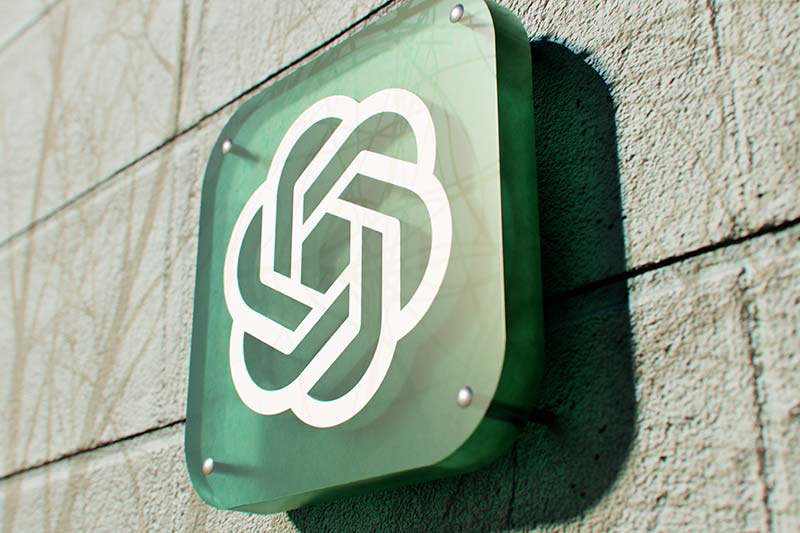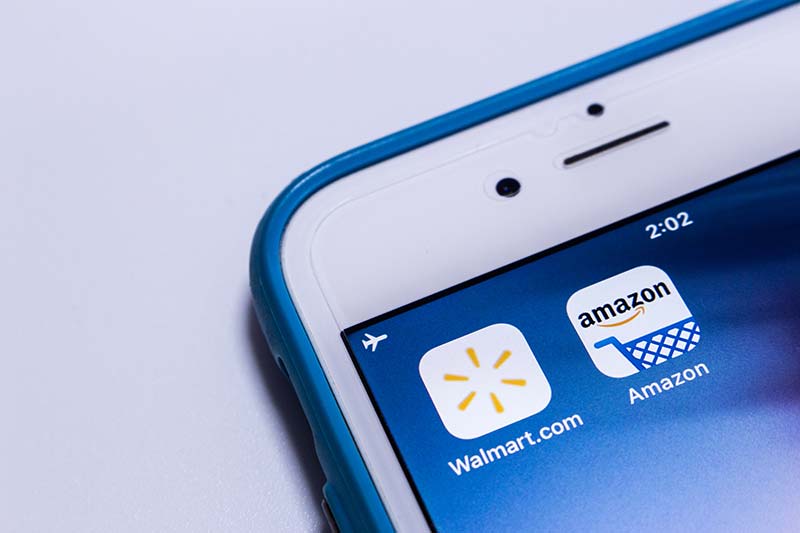Buy This, Not That: Unboxing the Best (and Worst) Big Box Retailers
Shah Gilani|June 5, 2024

Earnings are in, guidance is out, and the numbers are telling a story about the American consumer.
This week, we’re diving deep into the world of big box retailers.
I’m talking about the Walmarts… the Costcos… and the Targets of the world.
I’m looking at the leaders and the laggards…
The ones riding high on AI and subscription services…
And the ones that are falling flat.
I’m breaking down the charts, the revenue, the margins and more.
Find out which retailers are worth unboxing…and which ones belong in the discount bin.
Click on the thumbnail below for the latest episode of Buy This, Not That… your exclusive guide to the stocks that are worthy of your money – NOW.
TRANSCRIPT
Hey, everybody. Shah Gilani here with your weekly BTNT, as in Buy This, Not That.
This week, I’m going to cover a bunch of the big box stores. Why now?
Earnings are in. We know where these companies are at. We know what they’ve said about guidance. We know what they’ve said about the past and where things seem to be right now.
So that gives us a heads-up, and we always like a leg up… so let’s get a heads-up and a leg up on the big box retailers.
First up, I want to see if I can pull up – because I can’t always – I’m going to see if I can share with you my screen and pull up some charts so we can take a look at these stock in terms of, well, in terms of how they look graphically.
Why is that important? Well, it’s always important as far as I’m concerned, because what you want to see is the psychology of the price action.
And by that, I mean, when we’re talking about psychology, we’re talking about price action. That’s what you’re seeing in charts, people. What you’re seeing in charts is simply the action, the buying and selling decisions that investors and traders make, and that’s what a chart is. It’s not tea leaves.
It’s the psychology of investors and traders, their buy and sell actions, and the prices they transact at. That’s what we’re looking at, and we’re looking at Walmart.
So guess what? Why Walmart first up? Not because it just made a new high, not because it’s a great company… but because it’s going to probably go higher. It is the biggest big box retailer.
The numbers on Walmart, we’re talking about $657 billion in revenue.
Profit margin, 2.88%. Not impressive, but $657 billion in revenue in revenue, people? Come on.
Now, top line earnings rose 5.7% year over year.
For a company that big, that’s powerful. More impressive, global commerce at Walmart surged 23% year over year. So, yes, it’s a BUY.
It’s a buy for other reasons too. It’s the leader right now in using AI to expand, well, first of all, cut cost and manage expenses, as far as streamlining customer acquisitions. Meaning how much they pay to get new customers into the store or into their online Walmart+ subscription business. So they’re doing a good job there using AI.
Revenue is up 6%. Quarterly revenue growth is up 6%year over year. Quarterly earnings growth is up a staggering amount, like triple digits. Great. The yield is 1.25%, nothing to speak of, so there was no point in talking about yield.
But look at this chart. Walmart’s a BUY.
Gaps always give me the willies. It’s like, it’s any stock that gaps up and then made a new high, it’s a beautiful thing. In the premarket, we see here, it’s near 8:00 Wednesday morning when I’m recording this for you. In the premarket, Walmart looks to be up a little bit in premarket.
I always worry about these gaps, especially when you’ve had an earnings push higher and the stock is on a tear. Love to see that.
But at $66 and change, I would worry about filling this gap. So if you want to buy Walmart, and there’s no reason you really don’t want to buy Walmart, you can buy some right here.
And if you’re wanting to wait and see if the gap gets filled, that’s about 6.6% lower. So what you can do on that gap here with Walmart is you can wait till it comes back down to maybe, say, $60.
And so we’re talking about, you know, 10%, somewhere down here between the here and here, you know, 7% to 10% lower. If you want to buy, buy here, and you want to buy a half position or a third of a position and buy some lower if you get the gap, then do that. You might want to buy some here because it may not fill this gap for a while or ever. So that’s the game you play with gaps.
Walmart, it’s a BUY, people.

By the way, one more thing on Walmart. It’s not terribly expensive in terms of the price-earnings multiple. P/E trailing is about 28, so not bad.
Next up is Costco.
So let’s pull up a Costco cart.
But not a cart.
You know where that came from. How about a graph?
So as far as Costco goes, symbol COST, another stellar move. I mean, look at this stock.
This is a one-year chart. I mean, it’s beautiful. You look at a two-year chart here, and this, okay, so the gains have come pretty recently.
And are we peaking here? I don’t know. We just made another new high in Costco and it’s pretty hard to fault that chart.
The company has $248 billion in revenue and a profit margin of 2.73%. Tiny dividend, again, at 0.56%. But the stock is expensive. It’s expensive in terms of, yes, couple things. The price is $827. I’d call that expensive dollar wise, but it’s also expensive in terms of P/E.
Its trailing P/E is 51. You’re paying a lot for those earnings and the potential growth of the earnings, which are pretty good, but there’s also good revenue growth at 9%-plus year over year. That’s pretty good. Good earnings growth, close to 30% year over year. That’s good.
But a 50 P/E, that’s expensive. And an $827 price tag, it’s expensive. I’d rather go with Walmart. So I’m going to say Costco is a NOT only because it’s expensive.

If you own it, do not sell it. Just make sure you put some stops in there and continue to hopefully ride it a lot higher. But as far as buying it right now, it’s expensive.
Next up is Target. Target used to be one of my go-to favorite stocks, but then it cut the dividends. Things happen. Things change. And Target kind of fell out of favor with me, but it’s back.
Now, here’s a one-year chart of Target, symbol TGT. Stock’s trading right now at $150. The premarket’s up a little bit.
Sloppy chart for sure. And if you look at the chart over some time, that’s a two-year chart. Again, it’s kinda sloppy. It’s unimpressive.
Three years, this is what I’m saying. It used to be great, and then it came down. So, great all the way up, people, and then it kind of just keeled over, and I lost interest in it. But I think it’s back. It’s back for a few reasons.
So TGT, I’m going to say, is a BUY. And it’s a BUY, couple of reasons. It has $106 billion revenue, a 3.87% profit margin, has a decent dividend – a 2.92% dividend yield on a 49% payout basis. So you least get something out of the dividend for holding the stock.
So I do like that. I like the fact that the stock gapped down, and it’s filling the gap. So on a near-term basis, it filled the gap.
Now, here’s an example of going back here to November and a gap up that never got filled. I was just showing you the gap up, for example, in Walmart. These things may not get filled. That’s why I said in Walmart, if you like it and you want to buy it, buy a piece now. And if it fills again, you can buy more lower.
Here, the stock gapped up, kept going, gapped up, kept going, but now it’s filled this gap, as you can see here.
Gap down to fill this gap, then going up. On a technical basis, that’s not a bad position to be in. So as far as I think, as far as Target goes, I think you could buy it down here.
You could buy it down here, and if it does come back down, you know, you’re looking at, okay, do you get nervous here? No. Use a 10% stop because filling this gap back down here, to get back down here is a drop of 6.67%.
So if you get down to 10%, it’ll be below the 200-day. And you know what? Then maybe you want to exit. But I think it’s a BUY here.
It’s worth it. I like some of the things that Target’s doing. They’re really making a push on their Target Circle 360, which is their subscription service similar to Walmart similar to Amazon Prime. They’re making great strides with that.
I really like that.
So I like it. But, again, you know, we’re looking at some of these big box stores as go-to places, especially when the consumer eventually breaks, then these big box retailers are going to be more in line with the potential that buyers have as opposed to the higher-end stores. So I like Target. It’s a BUY down here. You can put a 10% stop on it and see where you can go with it.

Where are we going to go next?
How about we go to TJMaxx. Now TJMaxx, TJX Companies, I’m putting in because TJX is doing a lot of good things. I really like where they’re going.
I think that the stock has great potential. TJMaxx, to me, people, is a BUY.
Their earnings were good. As far as confidence, they raised their dividends. As far as confidence, looking like $2 billion to $2.5 billion in a share buyback program.
New high here. Really nice steady chart. Look at that. Pretty nice ascent here. There’s comps. Very good. There’s two years. Really just nice price action.
How can you fault that price action? So to me, TJ Maxx, TJ Maxx of companies with a new high, what’s not to like? Profit margin there, 8.74%. This is a very hefty profit margin.
The company makes money. Quarterly revenue growth year over year, 5.9%. Quarterly earnings growth year over year, 20%. So, yeah, at a $105 price and change here with a 26 price/earnings multiple on a trailing basis.
I like TJX here. I think it’s a BUY, people.

I want to hit the home improvement stores because they’re big box. So first up is, Home Depot.
Stock is sideways, people. I’m going to give this a quick NOT. Why not? Because don’t bother.
Look at the stock. It’s too volatile. I don’t think it’s got much going on for quarterly revenue growth, down 2.3% year over year. Quarterly earnings growth down 7% year over year.
Just not much going on. It’s a NOT. It it’s a nothing burger. It’s not worth your capital, in my opinion, right here.

Lowe’s, same story, people. LOW.
You know, home improvement, you’d think they’d be doing better, but they’re not. Lowe’s, again, at $216 a share and change, it’s NOT. There’s the two-year chart, pretty sloppy, pretty nothing, better places to put your capital. Here’s a one-year chart.
And once again, what don’t I like about it? Yes, it’s got good revenue, but quarterly revenue down 4.4% year over year. Quarterly earnings growth is -22% year over year.
Lowe’s and Company’s – LOW – NOT.

And I’m going to throw out two more real quick.
Dollar General and Dollar Tree. So Dollar Tree, DG, Dollar General.
Just look at the chart, and it’s going to – you’re going to know why I say NOT on Dollar General. And to me, just a nothing burger. There’s a one-year chart. Why would you bother? So I don’t need to go any further than that.
Year-over-year earnings growth, -30%. Right? That’s all I need to say about that. Dollar General, NOT.

It’s like, oh, if the consumer’s going to get blown out and the consumer’s going to have to downscale, where they’re going to go? They’re going to go to Dollar General or go to Dollar Tree? Maybe.
But it’s not going to be reflected in the price that much because these stocks are already beaten up.
And lastly, Dollar Tree, DLTR, it’s an NOT, people. You look at the chart and you know right away from the charts that there’s nothing going on here. There’s nothing good going on. It’s sloppy.
Why would you chase a stock that’s all over the place, has a profit margin of -3.26%, loses money?
On my favorite metric, net income available to common shareholders, that’s almost a loss of just shy of a billion dollars.
Dollar Tree? NOT.

So there you have it. Those are your big box BTNTs for this week. I’ll catch you guys next week. Cheers.

Shah Gilani
Shah Gilani is the Chief Investment Strategist of Manward Press. Shah is a sought-after market commentator… a former hedge fund manager… and a veteran of the Chicago Board of Options Exchange. He ran the futures and options division at the largest retail bank in Britain… and called the implosion of U.S. financial markets (AND the mega bull run that followed). Now at the helm of Manward, Shah is focused tightly on one goal: To do his part to make subscribers wealthier, happier and more free.



